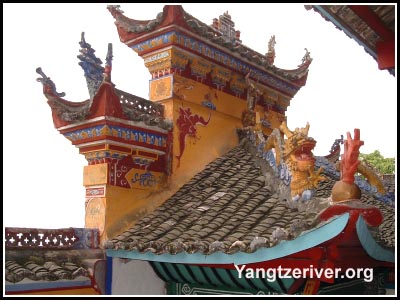Shibaozhai travel guide
Introduction
Shibaozhai, Literally means Stone Treasure Fortress, Located in ZhongCounty, at the south bank of the Yangtze River, 278 km away from Chongqing, it was first built in Qing Dynasty in 1750. Shibaozhai is one historic site that will look much different in 2009. When the lake formed by the Three Gorges Dam is completed, most of this bluff will be under water and the temple will sit close to the lake's edge on a newly formed island. The wooden architecture stands on the riverside. It is built by catch upon a rectangular rock with sheer cliffs with a height of 56 meters and 12 stories. And every floor of the wooden structure contains interesting artifacts. Each of the 12 floors of Shibaozhai is dedicated to a famous general of the Three Kingdoms period (220-265AD), a local scholar or a remowned Chinese poet.
Climbing the 12 stories is not as difficult as it may sound because you will need time to look at the paintings and sculptures on each level. Nowadays, it takes about 1.5 hours to climb from the pier to the top of Shibaozhai and round back from a back footpath. from our perspective, the statue enshrined in temple on the top flat looks not quite uniform, the reason local people enshrine GuanYu (who is known as military god in Chinese) in the first room of the temple is there was local troop gathered here, and in the second room, the Yu Huang and the baby-birthing god, maybe the enshrined statues are what the local people need most rather than what you seen in Fengdu.

What other to see
In addition to the murals, sculptures in the wooden architcture, the view of the river and the farms and village below is terrific. And there were two unusual interesting features of the Shibaozhai fortress. The first is the Duck Well at the top of the hill. Supposedly you can take a duck and drop it down the well and it will reappear swimming in the Yangtze far at the bottom of the hill. The Rice Flowing Well is the second feature. Legend has it that enough rice would flow out of the small well hole each day to feed the monks that lived in the temple and their guests. The "Stone Treasure" name is linked to this legend. However, one day a greedy monk chiseled a bigger hole in the rock, thinking he would get more rice. Of course, the rice flow ceased forever.



